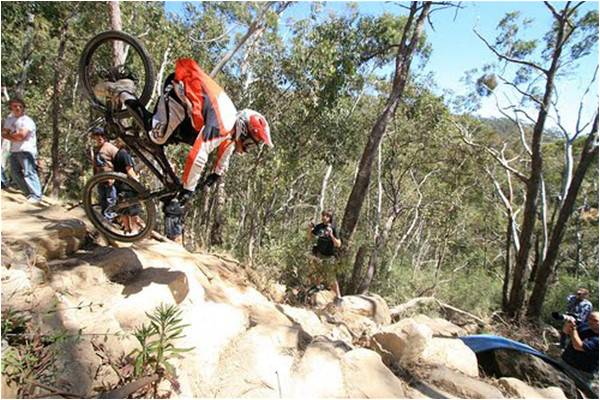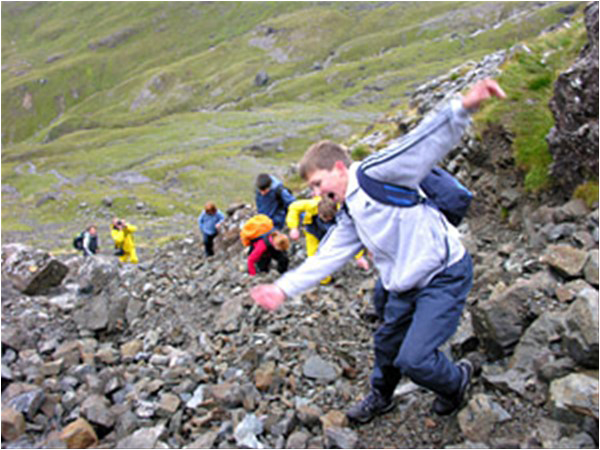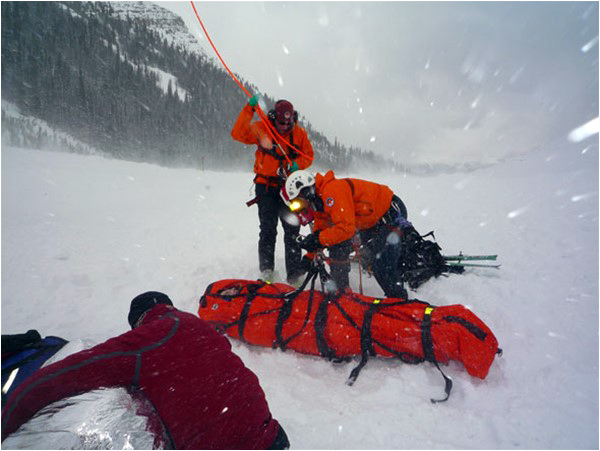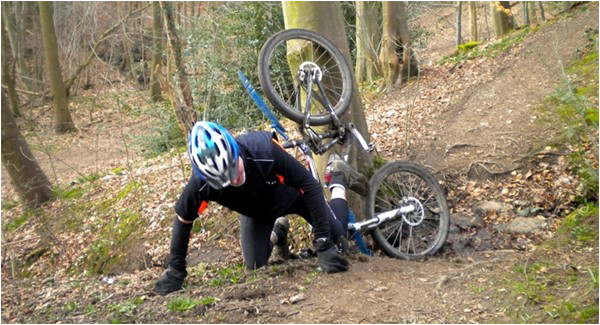
Over my lifetime I have been called “accident prone” or “klutz” more times than I’ve been called a human being. Every house I’ve ever lived in, the stairs have been christened with an Olympic style tumble down. Every sidewalk I’ve walked on has been properly introduced to a knee or two. My shins are best friends with tables from around the world. Easy hikes that I have been on dozens of times have been witness to one spill or more when happily looking around at the scenery. By contrast, none of the accidents that I’ve been in have been the direct result of a hazardous sport or activity. Why are some people just more prone to this phenomenon?
I had a good long think about it on this Eid which was spent nursing a skinned knee which had gone septic enough that Eid was effectively canceled for me. The week before I had been walking down a footpath which is incredibly familiar to me. I felt I knew every crack and dip in the cement intimately from having walked down to the shops countless times before. And no, I wasn’t texting on my phone, just blissfully walking down a street where there is no immediate threat to one’s well-being or safety. Sparse traffic, zero crime-rate and none of those pesky low-hanging branches. But yet another sidewalk was introduced to my knee. I was vexed and perplexed at the same time.

But then I came across an article in Outside Magazine in which they touched upon a similar issue in relation to hiking accidents. They found that most of the accident reports made to the Austrian Alpine Police were ‘mundane’. Apparently, they found that a large percentage of accidents were happening when people were ‘hiking, generally on a well-used trail, and they fall and hurt themselves’ as opposed to what we would imagine like avalanches or rock falls for mountaineers. To top it off, 90 percent happened in good weather and 81 percent transpired on marked trails. Indeed high-risk activities can be seen to be not as dangerous as low-risk ones like hiking. For example, a 2014 study conducted by a multi-disciplinary research group and the Petzl Foundation found that hiking caused the highest number of accidental deaths and disappearances when ranked among 11 other activities which one would normally consider more hazardous – including mountaineering, paragliding, ski touring, rock/cliff climbing and ice waterfall climbing.
Accidentology, apparently, is an actual field of study (I find out a little too late in life). Many studies within the discipline, including those on road and safety, give the obvious conclusion (which one doesn’t think of that often in day to day life) that the more relaxed people are in their surroundings the more likely they are to accidentally hurt themselves. Most analyses commonly seem to cite two elements of accidentality - monotony and complacency. So, in a potentially dangerous situation, we are more vigilant of circumstances and risk factors which might result in unnecessary accidents. When we are comfortable and relaxed in our surroundings, we proceed to make stupid mistakes.


I guess I should have gone on the solo 12-day hike I had been planning for this summer. But, while checking for safety guides on the trail I became encumbered by the ‘dangers’ with a capital D. Bears, disease-carrying mosquitoes, vulnerabilities of women walking on their own and finding drinkable water for 12 days in the wilderness. So I got to work worrying about and researching on: How to avoid bears which are regularly sighted in that particular area and then comparing prices of bear-proof food canisters and bear repellents on Amazon. Checking if tasers are legal in the state and then settling on finding the best pepper spray and distress whistles for personal safety. I looked for the finest mosquito-proof one-person tents and pored meticulously over maps on safe water sources along the trail. After this lengthy exercise, I convinced myself that I didn’t have the time or patience for this level of research before my short vacation time. Well, as accidentology would have it, bears would not have been as enormous a threat to my person as I thought at all! Just watch where you are going on the trail at all times because the likelihood of getting hurt is mostly from yourself – not bears!
It would seem that the same applies in life generally. Just when you are relaxed, complacent and not vigilant some harmful people or situations can creep in. And then one is suddenly left licking wounds and wondering how the toxic elements managed to come in through the well-guarded door. Lesson learned. Tread carefully - even when you feel you are entirely familiar and safe!
I had a good long think about it on this Eid which was spent nursing a skinned knee which had gone septic enough that Eid was effectively canceled for me. The week before I had been walking down a footpath which is incredibly familiar to me. I felt I knew every crack and dip in the cement intimately from having walked down to the shops countless times before. And no, I wasn’t texting on my phone, just blissfully walking down a street where there is no immediate threat to one’s well-being or safety. Sparse traffic, zero crime-rate and none of those pesky low-hanging branches. But yet another sidewalk was introduced to my knee. I was vexed and perplexed at the same time.

The Petzl Foundation found that hiking caused the highest number of accidental deaths and disappearances when ranked among 11 other activities which one would normally consider more hazardous - including mountaineering, paragliding, ski touring, rock/cliff climbing and ice waterfall climbing
But then I came across an article in Outside Magazine in which they touched upon a similar issue in relation to hiking accidents. They found that most of the accident reports made to the Austrian Alpine Police were ‘mundane’. Apparently, they found that a large percentage of accidents were happening when people were ‘hiking, generally on a well-used trail, and they fall and hurt themselves’ as opposed to what we would imagine like avalanches or rock falls for mountaineers. To top it off, 90 percent happened in good weather and 81 percent transpired on marked trails. Indeed high-risk activities can be seen to be not as dangerous as low-risk ones like hiking. For example, a 2014 study conducted by a multi-disciplinary research group and the Petzl Foundation found that hiking caused the highest number of accidental deaths and disappearances when ranked among 11 other activities which one would normally consider more hazardous – including mountaineering, paragliding, ski touring, rock/cliff climbing and ice waterfall climbing.
Accidentology, apparently, is an actual field of study (I find out a little too late in life). Many studies within the discipline, including those on road and safety, give the obvious conclusion (which one doesn’t think of that often in day to day life) that the more relaxed people are in their surroundings the more likely they are to accidentally hurt themselves. Most analyses commonly seem to cite two elements of accidentality - monotony and complacency. So, in a potentially dangerous situation, we are more vigilant of circumstances and risk factors which might result in unnecessary accidents. When we are comfortable and relaxed in our surroundings, we proceed to make stupid mistakes.


I guess I should have gone on the solo 12-day hike I had been planning for this summer. But, while checking for safety guides on the trail I became encumbered by the ‘dangers’ with a capital D. Bears, disease-carrying mosquitoes, vulnerabilities of women walking on their own and finding drinkable water for 12 days in the wilderness. So I got to work worrying about and researching on: How to avoid bears which are regularly sighted in that particular area and then comparing prices of bear-proof food canisters and bear repellents on Amazon. Checking if tasers are legal in the state and then settling on finding the best pepper spray and distress whistles for personal safety. I looked for the finest mosquito-proof one-person tents and pored meticulously over maps on safe water sources along the trail. After this lengthy exercise, I convinced myself that I didn’t have the time or patience for this level of research before my short vacation time. Well, as accidentology would have it, bears would not have been as enormous a threat to my person as I thought at all! Just watch where you are going on the trail at all times because the likelihood of getting hurt is mostly from yourself – not bears!
It would seem that the same applies in life generally. Just when you are relaxed, complacent and not vigilant some harmful people or situations can creep in. And then one is suddenly left licking wounds and wondering how the toxic elements managed to come in through the well-guarded door. Lesson learned. Tread carefully - even when you feel you are entirely familiar and safe!

